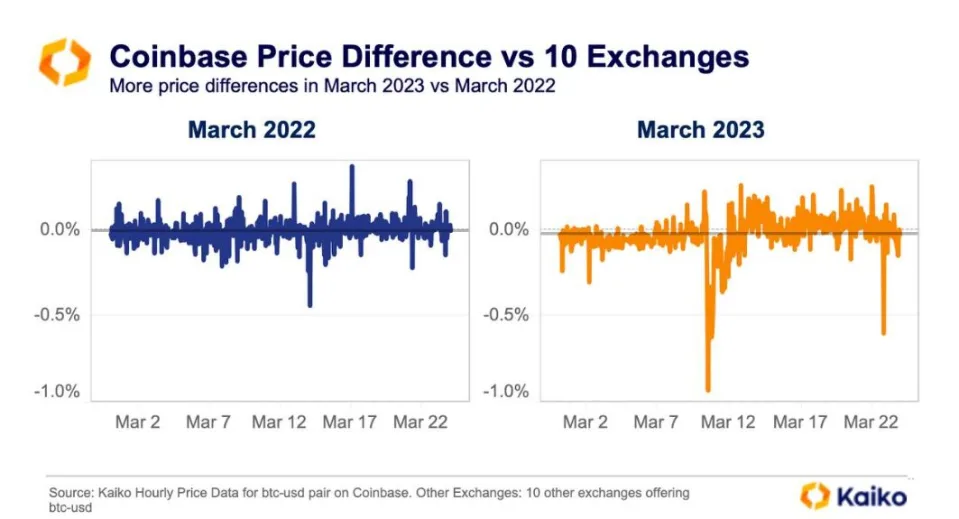By just about any measure, Bitcoin liquidity remains low, despite the cryptocurrency’s eye-catching upsurge this year.
Investors have been paying more on trades because of slippage, or the difference between the expected price of a transaction and the price at which it’s fully executed, a sign of worsening liquidity, according to Conor Ryder at Kaiko. The higher the difficulty in trading, the more investors are exposed to potential volatile price swings.
This can happen due to a change in the bid-ask spread in between the time a trade is placed and filled, or when there’s insufficient order-book depth to support large orders.
Even as a rebound in Bitcoin this year made it the best-performing asset in the first quarter, a widening US regulatory crackdown and the collapse of a few crypto-adjacent banks has tempered some investors’ enthusiasm.
“It’s more indicative of the institutional reluctancy to offer liquidity in the space,” Ryder, a research analyst at the Paris-based firm, said. A lot of crypto firms don’t want to get caught in the middle of a battle between US regulators and exchanges.”
Though prices have recovered at the start of 2023, trading volumes and liquidity in the crypto market have dried up when measured over the past year amid an overall plunge in prices, which has seen Bitcoin drop about 38% — to around $28,000 — and some other coins even more. Investors retreated over that period as a string of scandals scared them away. Analysts are now particularly tuned into how smaller retail investors may behave as they’ve been an integral part of the system, helping to drive up prices during the early pandemic boom.
“The tourists are definitely gone,” said Mark Connors, head of research at digital asset management firm 3iQ. “If you’re in this, you have to understand that the volatility is there, you don’t know where it goes day-to-day, but you understand the trajectory, the adoption, etc.”
Spot volumes on some of the most popular crypto exchanges also help to tell this story. Binance, the largest trading platform, at the end of March saw normalized 24-hour trading volumes of more than $6 billion, with monthly visits of about 65 million. By comparison, Coinbase, the second-biggest, saw trading volumes of about $1.3 billion, with roughly 33 million monthly visits, according to CoinGecko data and numbers compiled by the company.
Bitcoin trading volumes have collapsed, “which inevitably makes for a more volatile market,” said Fiona Cincotta, senior financial markets analyst at City Index. “The sharp drop in volumes means that it’s easier for large orders to move the BTC prices. So sit tight, there could be more wild swings coming.”
She added: “Falling volumes points to waning appetite for Bitcoin at its recent higher levels amid easing concerns surrounding the banking sector and as crypto regulation is under the spotlight.”
In recent days, news emerged that the US Commodity Futures Trading Commission sued founder Changpeng Zhao and his Binance cryptocurrency exchange for alleged violations of derivatives regulations. Binance has said it didn’t agree with the characterization of many of the issues alleged in the complaint.
“It remains to be seen how the case will impact Binance’s operations,” said Strahinja Savic, head of data and analytics at FRNT Financial. “In this context, the liquidity status quo in the crypto space has not been affected by the charges.”

